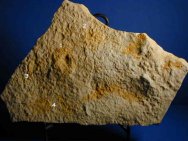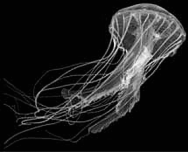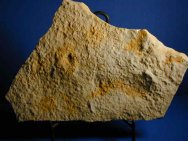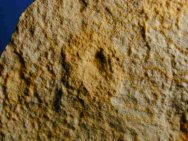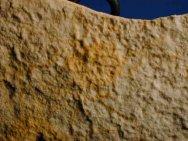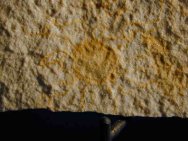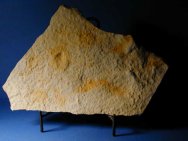Scyphozoa Jellyfish Ichnofossil
Phylum Cnidaria, Class Scyphozoa
Geological Time: Middle Cambrian
Size: Matrix: 12 by 8 inches
Fossil Site: Krukowski Quarry, Mount Simon Sandstone Outlier, Mosinee,Wisconsin
Code: DD426
Price: $375.00
|
The
plate contains four tentacled jellyfish, which are rare
in the quarry. The fossils are actually body cavity Being comprised entirely of soft tissue (living jellyfish are about 95 % water), unlike animals with exoskeletons (e.g., trilobites) or skeletons (vertebrates), jellyfish fossils are body fossils that are impressions of the jellyfish. Such fossil impressions are rare throughout the fossil record. Appearing during the Ediacaran, jellyfish were some of the most ferocious predators of the Cambrian marine environment. The Blackberry Hill scyphozoan fossils are almost surely the result of a mass stranding on an ancient Cambrian beach, possibly caused by a storm surge. Phylum Cnidaria (anemones, corals, jellyfish and sea pens) are among the most ancient animals and has one of the longest fossil histories of metazoans. Though simple in body form, they remain ubiquitous and widespread in modern marine environments. The earliest forms in the fossil record appear in Ediacarian fauna of Southern Australia, which dates to the Precambrian some 600 million years ago. Their persistence is clear testament that old and simple animals can be enormously successful, and that the clique' "climbing the evolutionary ladder" is a misnomer; rather, life either adapts to the current and changing environment, or perishes. Reference: Hagadorn, JW., Dott, RH., Damrow, D, Stranded on a Late Cambrian shoreline: Medusae from central Wisconsin, Geology (39) No. 2. |
